Part of the complete guide to understanding addiction
Addiction is a family disease. And much like addiction itself, the resultant family dysfunction quite often operates in a cycle. The addict’s behavior affects the rest of the family in various ways. As they respond with a wide range of coping mechanisms, their reactive behaviors influence that of the addict or alcoholic. The manifestation of family dysfunction in an addicted household will usually differ depending upon the family dynamic. After all, no two families are completely alike. However, we can categorize the family’s reaction to an addictive presence by identifying certain common dysfunctional patterns. In the following article we will explore how addiction affects families and look at eight dysfunctional family roles in addiction we have discovered based on our extensive experience treating addicts.
Families of Addicts
The position of the addict in the family has a bearing on how the other family members are affected by the addict’s behavior.
Children of an Addict
The children of an addict may struggle in various ways, particularly if both parents struggle with addiction. Often the children grow up without stability, safety, and security. Their environment is unpredictable as the parent/s will perform better or be more loving and attentive when sober, but possibly neglectful and even abusive when under the influence of drugs or alcohol. These children either grow up too quickly and suppress their emotions from a young age or may become needy and turn to negative behaviors for attention and warmth.
Parents of an Addict
The parents of a child struggling with addiction suffer in their own way. They may be consumed with worry over their child’s current physical well-being and future. A child struggling with addiction most likely won’t have a stable job, and any money they have will be used to fund their addiction. The parents may be constantly conflicted, unsure if they should support their child or if they would be enabling the addiction further. They may also experience shame and guilt over their child’s negative choices in life, blaming themselves for their child’s addiction disorder.
Breakdown of Dysfunctional Family Roles in Addiction
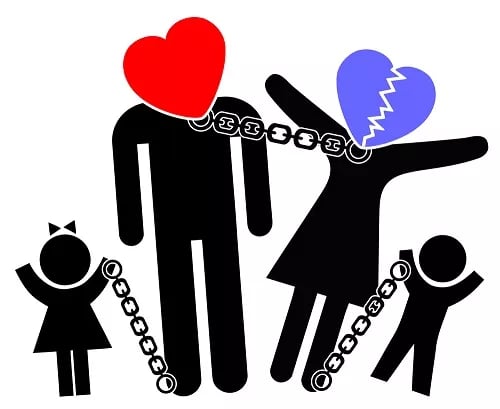
Most experts identify six family roles in dysfunctional families in particular. In her book, Another Chance: Hope and Health for the Alcoholic Family [1], addiction and codependency expert Sharon Wegscheider-Cruse identifies the six alcoholic family roles.
The dysfunctional family roles in addiction are as follows:
- The Dependent
- The Enabler
- The Hero
- The Scapegoat
- The Lost Child
- The Mascot
Wherever you find information on alcoholic family systems, you will usually see these roles listed.
Other Models of Dysfunctional Family Roles
Dysfunctional family dynamics, however, arise from more than just addiction. For instance, the six roles attributed to a family torn apart by divorce or separation look slightly different from those above. The Scapegoat only exists as a variant of another role dubbed the Problem Child, with the Enabler renamed as the Caretaker. Naturally, the Dependent occupies no place in such a family. Even when exploring how drug addiction affects families, the Dependent simply occupies the Problem Child role, leaving space for another category known as the Mastermind.
If that all sounds a bit confusing, don’t worry. We do not expect you to accept just one model of dysfunctional family roles. Again, every family works differently. Furthermore, many children or other family members may fit into multiple categories. The Hero may sometimes feel like a Lost Child, and the Mascot (also known as the Family Clown) sometimes becomes the Scapegoat. In many cases, the Dependent may fit into multiple roles as well—especially in families involving more than one substance user.
Are Adults Affected by the Addict in the Family?
While we usually see these addiction family roles attributed to children, they do not simply vanish upon reaching adulthood. Those who grew up in alcohol or drug-addicted families may wear these masks for the rest of their lives. Licensed counselor and social worker Sharon Martin discusses why [2] this happens, using adult children of alcoholics as an example:
“Children crave and need predictability. Your needs must be met consistently in order for you to feel safe and develop secure attachments. This didn’t happen in your dysfunctional family. Alcoholic families are in ‘survival mode.’ Usually everyone is tiptoeing around the alcoholic, trying to keep the peace and avoid a blow up.”
Failure to develop secure attachments can result in any of the dysfunctional family roles listed. Looking past the traditional six family roles in addiction and embracing all eight family roles in addiction discussed above, allow us to dive deeper into this issue. Whether you are a Dependent, an Enabler, or any mix of roles discussed, identifying the effects of family dysfunction on your own behaviors will mark the first step on the road to healing.
The Dependent
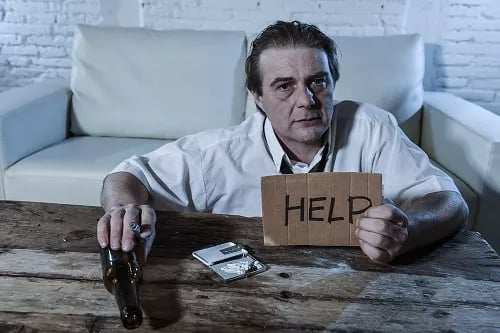
We generally characterize the Dependent as the focal point within the greater spectrum of dysfunctional family roles in addiction. As they slide further down the scale and lose themselves to substance abuse, the family’s trajectory alters course. Family members change their behaviors, whether willingly or unwillingly, to accommodate the Dependent’s lifestyle. For some, this means enabling. Families of addicts may find themselves lying to friends, or canceling obligations to bail their loved one out of a jam. Other family members react more harshly, sometimes even cutting off all contact with the Dependent. At either extreme, this changes the whole of the family dynamic.
Naturally, the Dependent faces the most obvious struggles in recovery. Some might even say they benefit from the existence of such a clear-cut role. They often don’t need to do much soul-searching to arrive at the conclusion that their behaviors must change. (Obviously, there are exceptions, and not all Dependents succeed in recovery or even attempt it.) The Dependent will still need to identify certain behavior patterns if they wish to achieve a full recovery. At the onset, however, the problematic aspects of this particular dysfunction will appear far more tangibly than those stemming from other dysfunctional family roles.
The Caretaker

Also known as the Enabler, we can identify at least one primary similarity between the Caretaker and the Dependent: the bulk of their daily lives seem to revolve around drugs and alcohol.
Common behaviors of the Caretaker may include, for instance:
- posting bail after an arrest
- making excuses for their addicted loved one’s behavior, and
- looking after the Dependent’s basic needs when intoxication prevents the Dependent from doing so themselves.
Caretakers generally suffer from codependency, which affects their relationships with all members of the household. They often facilitate—and sometimes encourage, whether purposefully or not—all addiction family roles. Heaping praise upon the Hero, enabling the Problem Child’s behaviors, falling prey to the Mastermind’s manipulation, etc.
We usually think of the Caretaker as a spouse or parent. In some cases, however, the chemical dependency of an adult in the household may necessitate that one of the children step up to fill this role. In such cases, the Caretaker may fit the roles of both Hero and Lost Child. They work to keep the family together, but grow up feeling as if they never got to experience a true childhood. This may lead to feelings of bitterness and resentment. Fear and inadequacy also tend to characterize the Caretaker, especially those who blame themselves for the Dependent’s suffering.
The Problem Child

You do not often see the Problem Child on the roster of dysfunctional family roles in addiction. Perhaps one explanation for this might be the assumption that the Problem Child and the Dependent are usually one and the same. Indeed, one particularly rebellious child sometimes influences the whole of the family dynamic, leading the rest of the household to respond by filling the rest of the categories. As one may presume, this rebellion often includes the use of drugs and alcohol.
However, the Problem Child may also arise in response to the dysfunction caused by a Dependent. Sometimes a Lost Child becomes tired of feeling neglected and decides to act out. In some cases, the Problem Child acts as an inadvertent Caretaker, enabling the Dependent by diverting attention onto their own misbehavior. Occasionally, though not necessarily in a majority of cases, diversion may even act as the Problem Child’s primary intention. The latter case presents us with a rare example of a time in which the Problem Child will also play the role of Hero, depending upon which family member’s viewpoint we apply to their behavior.
Most experts in addiction family roles apply this description to the Scapegoat. This would make our inclusion of the Problem Child appear redundant. But as you will see below, we might make at least one important distinction between these two seemingly identical family roles in addiction.
The Scapegoat
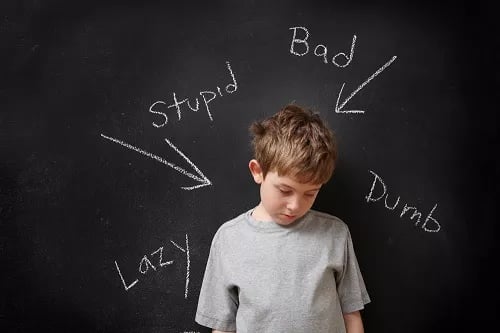
Many define the Scapegoat in the same manner as we defined the Problem Child above, particularly regarding those who draw attention away from the Dependent’s behavior. They characterize this as an effort to protect the addict in the family, possibly out of feelings of guilt or shame. But in Not My Kid: A Family’s Guide to Kids and Drugs [3] —which precedes Wegscheider-Cruse’s book by about five years—authors Beth Polson and Dr. Miller Newton define the Scapegoat as a family member who often does nothing to earn their role within the family’s dysfunction.
In this take on what the family roles in dysfunctional families are, the Scapegoat suffers misplaced blame for the behaviors of others in the family. Rather than a Problem Child who diverts attention, this definition casts the Scapegoat as an individual who generally exhibits relative stability and emotional health compared to the rest of the household.
Nonetheless, they may receive blame for the Dependent’s behaviors if even tangentially connected to them, for example:
- “How could you allow this to happen?”
- “Why didn’t you say something sooner?”
- “How did you let it get to this stage?”
In some cases, they may even receive blame for events in which they did not participate by any action or inaction, and in fact, did not even know about until they found themselves drawn into the conflict as a wrongly accused culprit.
The Scapegoat will sometimes grow to believe others’ perceptions of them. The guilt with which they have been unjustly saddled will characterize future relationships by causing frequent feelings of inferiority and self-loathing. By contrast, some Scapegoats who recognize their unfair treatment may struggle with trust issues. And due to the complexities of human behavior, some Scapegoats will find themselves regularly torn between both extremes.
The Mastermind
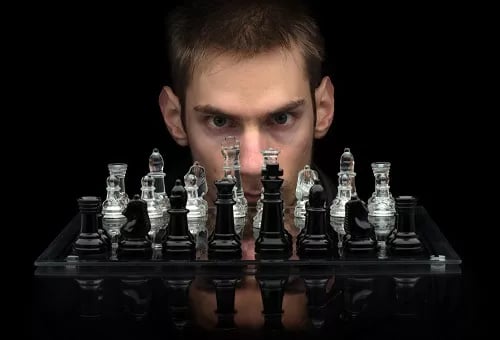
Much like the Problem Child, the Mastermind may fail to appear in most addiction-centered breakdowns of dysfunctional family roles due to the sheer assumption that the Dependent usually takes up this mantle. We associate the Mastermind with manipulation and opportunism, traits sometimes employed by Dependents to hide or facilitate their continued use. From the standpoint of the Caretaker, and occasionally the Scapegoat, the Dependent most certainly fills this role.
The Mastermind, however, sometimes occupies a much more complex space within the overall family dynamic. Some Masterminds put on the façade of other dysfunctional family roles at will, depending upon the aims they seek to achieve. Usually, however, the Mastermind simply observes the behaviors exhibited by the rest of the family, using them to their advantage. They may use the diversions of the Problem Child or Scapegoat to engage in their own misbehavior. Or they may take advantage of the Caretaker’s enabling nature to fulfill desires that might otherwise be denied to them.
We should clarify that, while the above description casts the Mastermind almost as a villain, they don’t necessarily act with nefarious intent. Sometimes, in the wake of the chaos caused by competing family roles in addiction, opportunism may seem the only way to meet their needs.
Take, for instance, a child who provides emotional support to a Caretaker simply to receive affection in return. This act fits the Mastermind role, as their intention revolves around their own emotional well-being rather than the Caretaker’s. But, while perhaps opportunistic, the behavior is still quite understandable. All the roles in a family struggling with addiction are, when broken down to their core, merely different ways of seeking validation, or attention. The need itself is not symptomatic of dysfunction, but rather a fundamental part of human nature. It is only the behavior used to fulfill this need that we might call dysfunctional.
The Hero

The Caretaker might make excuses for the Dependent, but the Hero is ultimately the one who does the best job of bringing esteem to the family. Heroes work hard to demonstrate responsibility, seeking achievement in any form possible. Younger Heroes will often find numerous extracurricular activities at school while working in their free time. The family may rarely see the Hero due to the sheer amount of time they spend adding to their roster of accomplishments.
Despite outward appearances, the Hero suffers as much internal strife as any of the other family roles in addiction. Due to their hard-working lifestyle and extreme perfectionism, Heroes suffer high levels of stress. The constant struggle for achievement, the drive to set themselves apart from the family’s dysfunction, essentially becomes its own addiction. Much like the Caretaker, the Hero often develops major control issues. They seek validation by trying to control the world around them. To some extent, they may succeed in this. But as each accomplishment fails to provide true inner peace, they respond by working even harder. Eventually, the Hero may take on too much or spread themselves too thin. This leads to extreme feelings of guilt and shame when the Hero finally takes on a task they cannot accomplish and must come to grips with failure.
Relationships between the Hero and other family members sometimes become volatile. The Hero may resent the Dependent or Problem Child, blaming them for the family’s struggles. They may even blame the Caretaker for allowing this to happen. In many cases, the Hero feels stuck in their lifestyle simply because nobody else is stepping up to the plate. They may feel as if the family’s burdens rest upon their shoulders. Left unresolved, these inflated feelings of self-importance may lead to a difficult life of constant overwork.
The Mascot
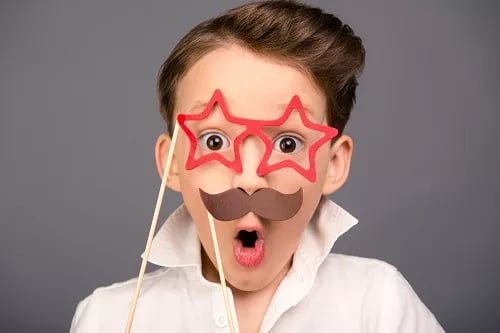
All of the family roles in addiction share one thing in common—regardless of their outlook on the situation, they usually take the Dependent’s addiction seriously. The same can be said of the Mascot; however, you wouldn’t necessarily know it at first glance.
The Mascot often cracks jokes or finds other ways of trying to provide entertainment. They do so in an attempt to alleviate the family’s stress, although sometimes this may backfire. Particularly insensitive jokes or immature antics will sometimes test others’ patience. When their jokes are poorly received, this often only heightens their fear and causes them to double down with more humor. On such occasions, the Mascot may briefly switch roles and become the Scapegoat. Eventually, when things calm down, they return to their role as the family jester.
Much like the Hero, the Mascot’s outward appearance masks deep-seated insecurities. They use their sense of humor as a defense mechanism to put off dealing with pain, fear, or any other sort of emotional discomfort that might cause them trouble. As a result, these feelings remain unprocessed and unresolved.
Mascots find themselves in a state of arrested emotional development, unable to cope properly with negative emotions. Their sense of humor becomes their most defining characteristic, and they fear that any failure on their part to maintain it may result in abandonment. While their antics may gain them some popularity (both inside and outside the family), this popularity feels cheap. The Mascot becomes isolated within a sea of people who enjoy their company, yet don’t really know them as anything other than a walking laugh factory.
The Lost Child
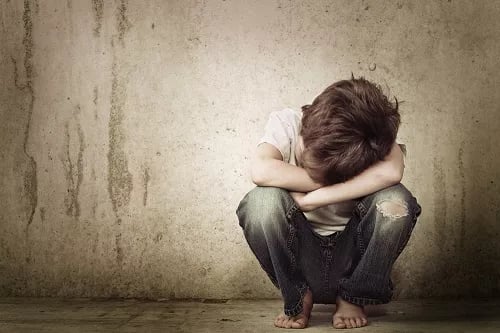
Each of the above dysfunctional family roles in addiction manifests through action. The Lost Child stands apart, in that we characterize this role primarily by inaction. Those who fit into this role try hard not to rock the boat. They may never mention the Dependent’s behavior, perhaps even going out of their way to avoid family discussions about it. Introverted and inconspicuous, the Lost Child may take this role by choice. Many times, however, the Lost Child is as their title implies—someone whose needs were simply neglected, lost in the bedlam of family drama.
Since we characterize the Lost Child by their neglected needs, they may easily fit into many of the other roles common in families of addicts. A Lost Child who gets fed up and angry with their role may wear the mask of a Problem Child for a day, simply to take the spotlight for a short period of time. The Hero may identify as the Lost Child if they feel the rest of the family does not acknowledge their achievements. Sometimes the Lost Child plays the role of Scapegoat, disappearing from the family’s radar until they become entangled in a family dispute against their will. Usually, however, the Lost Child simply stays out of the way. In a dysfunctional household, the Lost Child feels it safer to remain neither seen nor heard.
Even when the Lost Child assumes their role by choice, they may still resent the family for their neglect. Lost Children often grow up feeling ostracized, lonely, and inadequate. They assume their neglect must result from some sort of personal failing, that something must be wrong with them, or else they would receive the love they deserve. This lack of esteem may lead to dangerous behaviors later on, such as self-harm or a tendency to become involved in abusive relationships.
Overcoming Dysfunctional Family Roles in Addiction
When defining how addiction affects families, we think of it as tearing families apart. Fearing the worst, those who find themselves struggling with an addict in the family may resign themselves to fate. They may consider thoughts such as:
- “I cannot save this person.”
- “Things will never change.”
- “Our family deserved a better life.”
These defeatist thoughts, while quite understandable, find little basis in reality. Yes, many families do find themselves torn asunder due to addiction. But it doesn’t have to be this way. Do you know the single easiest way to tell that the hypothetical speakers above are lying to themselves? None of them speak to the present. The first two offer bleak prophecies of the future, while the other mistakes their present situation for a history already written.
In the present, right now, an opportunity lies before you. If you were able to recognize yourself in any of the family roles in addiction above, then you have already taken an amazing step toward personal growth.
Support for Families of Addicts
The healing process usually begins when the Dependent enters addiction detox facilities and begins full recovery. In our drug and alcohol rehab programs, we allow the family to involve themselves in their loved one’s care. They can speak with Avenues Recovery therapists and check in on progress. Families of addicts may arrange calls with the therapist and their loved ones to discuss their differences and resolve issues within the family dynamic. This helps them to begin overcoming their dysfunctional family roles in addiction. In a sense, the entire family enters recovery simultaneously.
Family members may take other steps toward recovery on their own time as well. Support for families of addicts exists in the form of groups such as Al-Anon [4], Nar-Anon, Codependents Anonymous, and Adult Children of Alcoholics. These groups provide a forum for members to share about their dysfunctional family roles and how addiction affects families.
Working with a therapist, engaging in the Dependent’s recovery, and building your own support network will take you a long way toward overcoming dysfunctional addiction family roles. Recovery is a lifelong journey, but these steps will help you make a solid start. And sometimes, a good start is all you need to begin the process that will change your life forever.
For more information on our programs and how you can help your addicted loved one while also helping yourself, contact us today for more information. We understand your pain, and we are here to help you begin moving past it.



